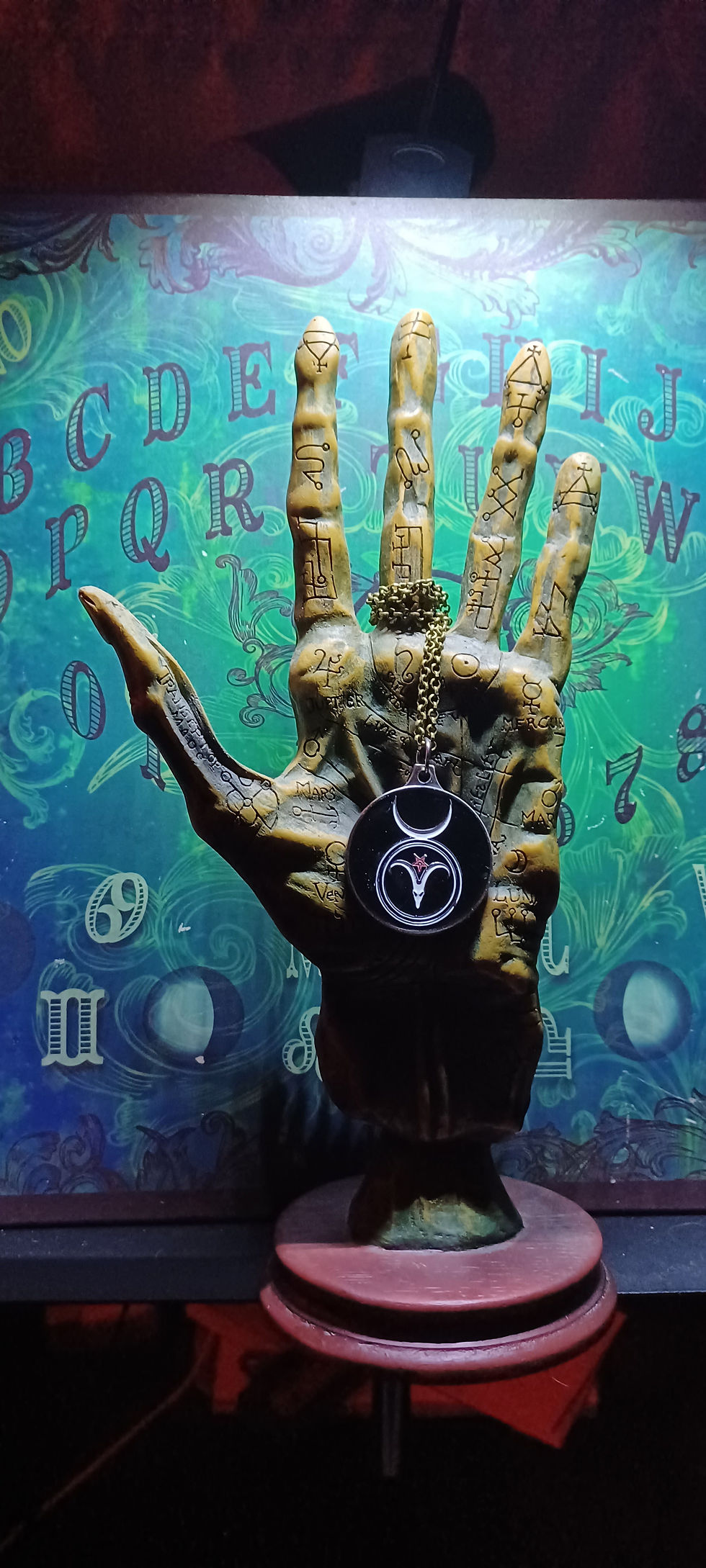BAPHOMET (Abu Fi Ha Mat)
- Etu Malku

- Mar 7
- 3 min read

The Self is a paradox, it is the thesis, antithesis, and at the same time, it is a synthesis. The two oldest and greatest archetypal structures within our psyche is the concept of the macrocosm and the microcosm. Our instincts attach us to the macrocosm, our desires pull us in different directions, we are in continual conflict with ourselves.
Rarely do we succeed in an undivided goal, and when we rarely succeed the price that comes with it is the repression of the Greater Self. Single-mindedness and the annihilation of opposites is not the answer, but the harmony of opposites is."
To This Baphomet
Abu Fi Ha Mat (The Baphomet)
Within the realms of occult lore, Baphomet, a symbol shrouded in
enigmatic power, arises as the embodiment of harmony and the primacy of darkness. It is this very essence that led the Knights Templar to embrace Baphomet as their revered deity.
As a representation of Azoth, the elusive fifth element, Baphomet holds the key to the alchemical transformation of base metals into the precious gold of enlightenment.
In the expansive tapestry of mystical symbolism, the figure of Baphomet finds kinship with the archetypal Horned-God. Carl Jung, a luminary of psychological insight, identifies Baphomet as the perpetuation of this ancient archetype, resonating with deities such as Cernunnos, Pan, Hathor, and the Devil. Through the ages, Baphomet has assumed myriad forms, weaving its enigmatic influence through the collective consciousness of mages and seekers of arcane knowledge.
We first encounter the name Baphomet in a 1098 letter written by Anselm of Ribemont, a crusader, describing a Templar ritual to be performed before battle; “As the next day dawned they called loudly upon Baphometh while we prayed silently in our hearts to God; then we attacked and forced all of them outside the city walls”.
Indeed, the mystical tapestry of the Baphomet weaves a tale of profound significance an embodiment of the sacred union between the anima and animus, mirroring the Hieros Gamos, the divine marriage of feminine and masculine energies. Rooted in the ancient texts of Greece, this concept evokes the inherent harmony between wisdom and compassion within the human experience. Within the realms of alchemy, known as al-Khemia, the quest for spiritual transformation, the Baphomet stands as an emblematic figure.
It encapsulates the ultimate goal the attainment of the Philosopher's Stone a symbol of enlightenment and transcendent wisdom.
___________________________________________
Kitab Eawa' fi Laylat Alsahra'
(Book 0f Howling in the Desert Night)
by 'Amir Alzzalam
Baphomet: The Father of Understanding
The name Baphomet traces its origins to the trials of the Knights Templar, accused of heresy by the Catholic Church in the early 14th century. Among the charges brought against the order was the worship of a mysterious idol — a severed head believed to bestow wisdom and prophecy. The head was described in some accounts as having carbuncle eyes — precious red gems — and was allegedly kept at the Templar Temple in Paris. Some theories suggest it was either a sculpted reliquary, an embalmed human head, or an oracle used for divination.
One interpretation of the name Baphomet is that it is an anagram for the Latin phrase: Templi Omnium Hominum Pacis Abbas — “The Father of the Temple, Universal Peace to Men.” This links the Templars’ Baphomet to the concept of hidden wisdom and secret knowledge. The Templars were known to have connections with mystical sects during their time in the Holy Land, including the Hashashin (Assassins) and other esoteric brotherhoods.
Idries Shah proposed the most compelling theory in his book The Sufis, tracing the word Baphomet to the Arabic Abufihamat — “Father of Understanding” — a title used among certain Sufi mystics to signify illumination and spiritual insight. In Sufic terminology, ras el fahmat or the Head of Knowledge represents the culmination of refined consciousness, aligning with the idea that the Templars sought gnosis through secret rites.
Some legends even associate Baphomet with John the Baptist, another patron of esoteric traditions. His severed head was believed to hold the power of prophecy, and relics of his skull were highly coveted by crusading knights. The connection between the head of prophecy, divine wisdom, and occult veneration points toward a deeper initiatory symbolism beneath the accusations of heresy.
Whether as a severed head, an occult symbol, or the embodiment of esoteric wisdom, Baphomet remains a powerful icon of transmutation, hidden knowledge, and the primal force of illumination — a cipher for those who walk the path of forbidden wisdom.


